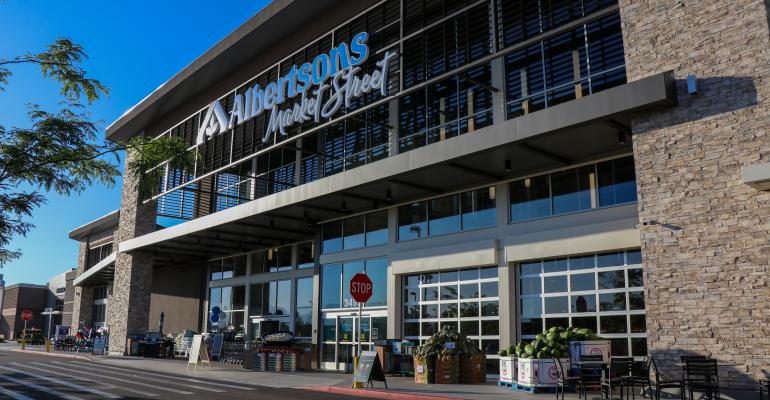For supermarket giant Albertsons Cos., the next chapter in the company’s strategic transformation is just beginning.
Not long ago, the Boise, Idaho-based grocer had its hands full integrating the $9 billion acquisition of Safeway, which closed in January 2015. During that process, the company embarked on an even bigger deal in February 2018: a proposed $24 billion acquisition of Rite Aid. Through the merger, Albertsons aimed to boost its scale, extend its geographic reach and create more synergies to take on larger, better-capitalized rivals — including Walmart, Kroger and Costco — and fend off a coming grocery retail onslaught by Amazon, which acquired Whole Foods Market in August 2017. Investor pushback, however, forced Albertsons and Rite Aid to scuttle the deal in August 2018.
That left Albertsons in a tough competitive position — “a challenge,” according to one industry analyst. “They’re levered up, their prices are too high and they’ve underinvested in their assets,” he said at the time. Financial growth also remained lackluster, and the failed Rite Aid deal marked a second unsuccessful attempt (the other coming after the Safeway acquisition) to go public.
But Albertsons didn’t let the downsides of two mergers — one a lengthy post-merger integration, the other a terminated transaction — prevent it from realizing upside.
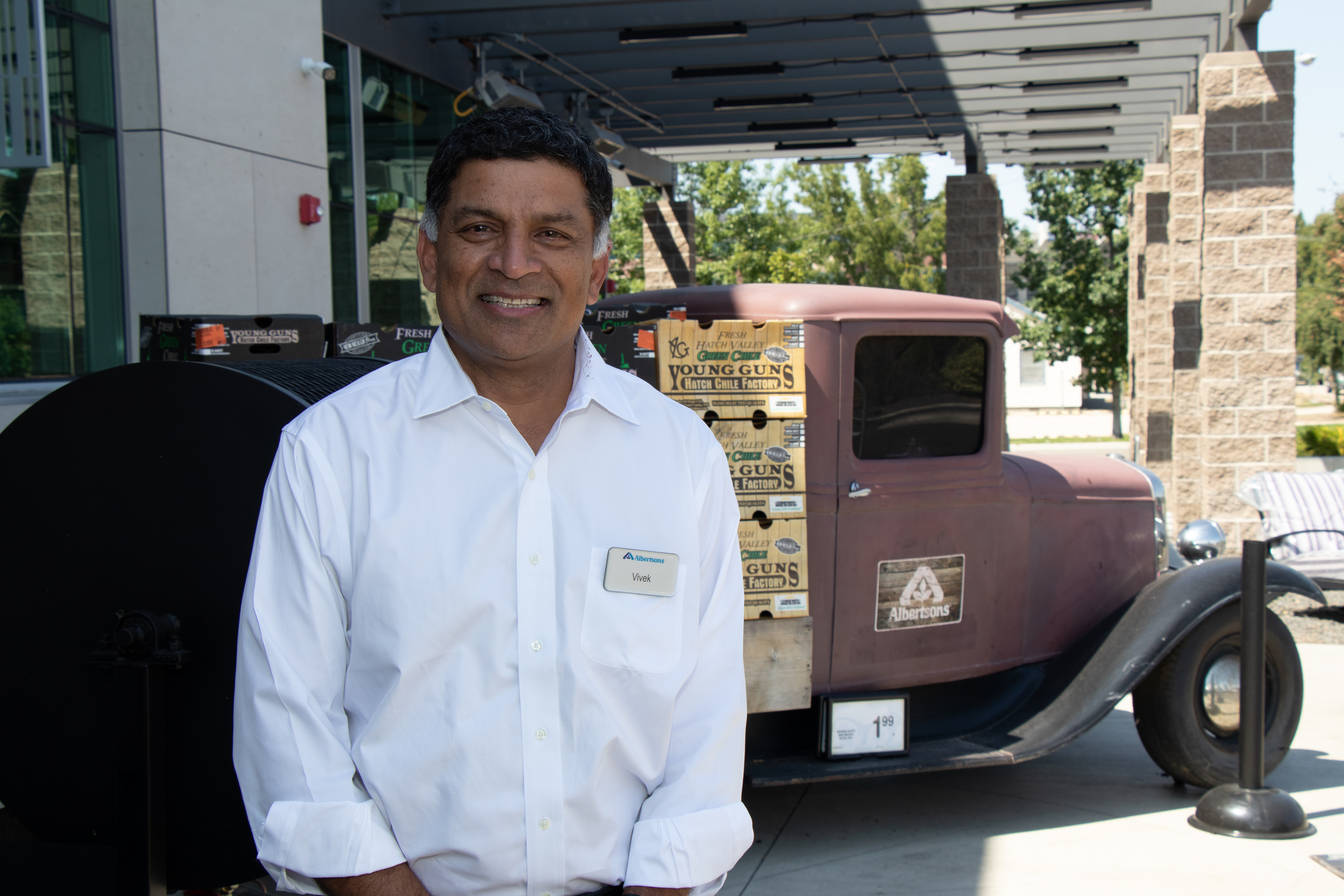
“I saw a company with a great foundation,” said Albertsons president and CEO Vivek Sankaran, who joined the retailer in 2019.
After winding down the Safeway integration in the spring of 2019, Albertsons has emerged as a more efficient, modern company. And with the inception of new President and CEO Vivek Sankaran in April 2019, the retailer has zeroed in on its strengths: strong local store banners, a national scale, a burgeoning e-commerce business, a thriving private-label portfolio and the growing just for U loyalty program.
“I saw a company with a great foundation,” said Sankaran, who came to Albertsons after serving as CEO of PepsiCo Foods North America. “The banners have so much legacy, the locations are fabulous and they are in very good markets. The company was just finishing an integration phase, and there was an excitement and commitment from the board to accelerate the transformation agenda of the company. It’s such a vibrant sector that we’re operating in, and I saw it as a great opportunity to take a company with such a good foundation and accelerate the transformation.”
Through the fiscal 2020 first quarter, Albertsons has seen 10 straight quarters of comparable-sales growth and achieved market share gains versus key competitors. Digital sales also have boomed, and the company has fueled expansion of its Own Brands and just for U loyalty programs, built up its technology prowess and refreshed stores, led by a compelling fresh food offering. Importantly, the company has executed during the COVID-19 pandemic — a time of heightened customer need. And on June 26, Albertsons began trading on the New York Stock Exchange (under the symbol “ACI”) through an $800 million IPO, opening up a new avenue of capital for growth.
“We are quickly becoming a 21st century retailer,” said Geoff White, executive vice president and chief merchandising officer. “We went through our integration, and we were very focused on making sure that not only all the synergies were hit, but that we also became much more efficient from supply chain and technology perspectives. As we came out of that, we had momentum in our sales and were gaining share. And the transformation started when Vivek started.”
For its impressive resurgence, innovation and dexterous transition to an omnichannel strategy, Albertsons Cos. has been named as the 2020 Retailer of the Year by Supermarket News.
“As a pure grocery and destination retailer with a growing suite of convenient omnichannel offerings, we view Albertsons as one of the strongest beneficiaries of the COVID-19 grocery acceleration and changes in consumer behavior,” BofA Securities analyst Robert Ohmes wrote in a research note. “While we think Albertsons will continue to benefit from elevated industry sales/profitability trends near term, importantly, Albertsons’ share gains supported by strong in-stocks and supply-chain execution during the crisis could be very sticky — especially given loyal household acquisition and higher digital engagement — and translate to sustained higher sales/market share going forward.”
A Well-Defined Plan
Sankaran is keeping Albertsons on a growth path via a four-point plan: maintaining in-store excellence, “supercharging” digital and e-commerce offerings, driving productivity and being “locally great, nationally strong.”
Naturally, he said, it all starts at the store. The second-largest U.S. supermarket operator, Albertsons has 2,252 retail stores (including 1,726 pharmacies and 402 fuel centers) in 34 states and the District of Columbia under such banners as Albertsons, Safeway, Vons, Pavilions, Randalls, Tom Thumb, Carrs, Jewel-Osco, Acme, Shaw's, Star Market, United Supermarkets, Market Street and Haggen. It holds the No. 1 or No. 2 market share in 68% of U.S. metropolitan statistical areas (MSAs) and serves 33 million customers weekly.
“The store is central to our company. It’s what generates a lot of the growth and the profit, so getting more performance out of stores is imperative,” Sankaran explained. “The types of things we’re doing to get more performance from the stores are continuing to double down on our fresh assortment and value-added fresh, build the Own Brands portfolio and be excellent in our everyday operations — in-stock conditions, customer service, making sure that the working capital is tight, better ordering practices and so on.”
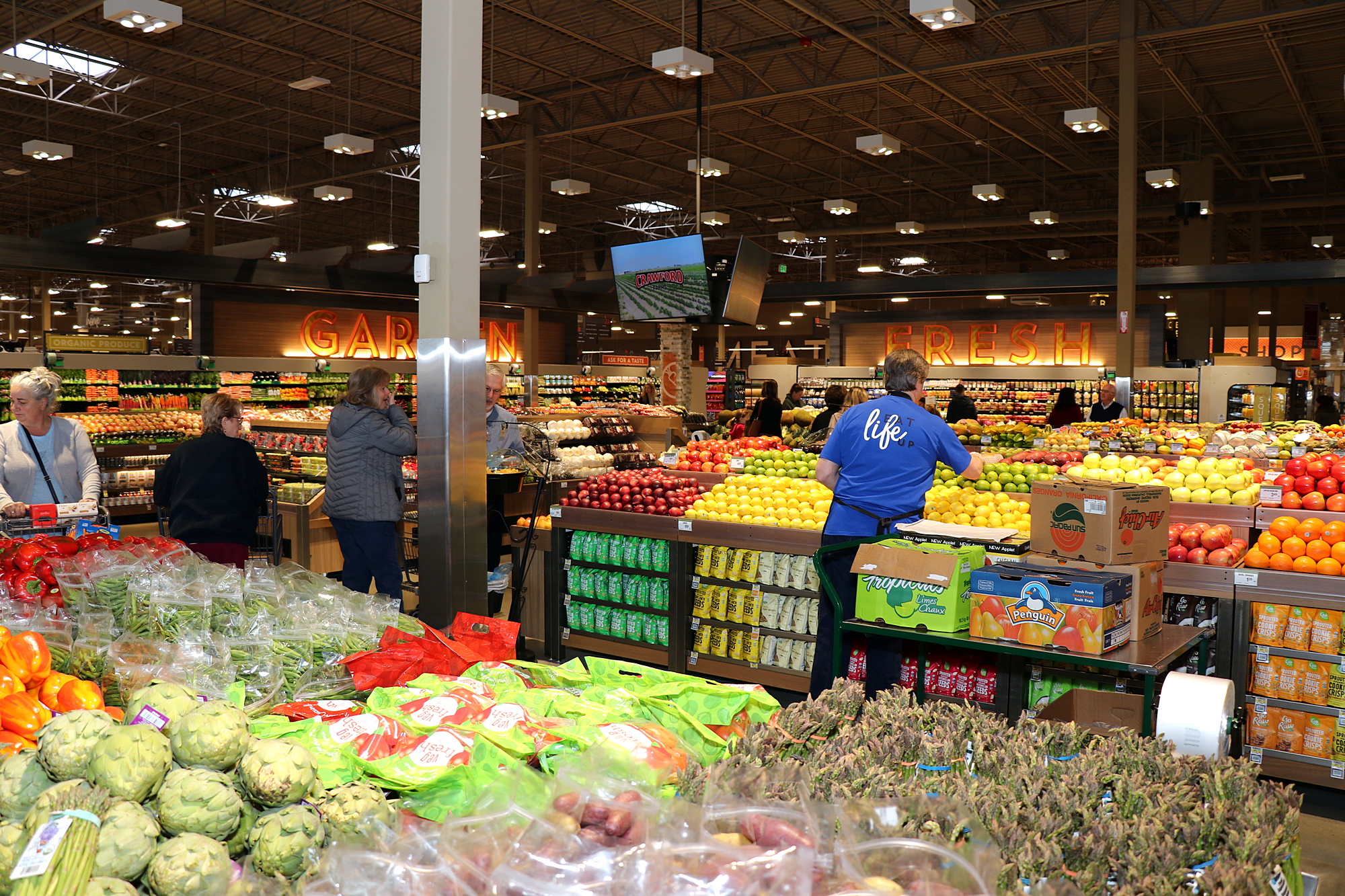
The fresh side of the business is a critical differentiator for Albertsons, said chief merchandising officer Geoff White, noting, “It has been in our DNA for decades.”
Working hand in hand with strong stores is e-commerce. If customers are happy with their local store’s service and offerings, that will carry over to the extra convenience provided by online grocery delivery and pickup, resulting in even higher satisfaction and more business, according to Sankaran.
“We’re building our omnichannel business on top of running great stores,” he said. “If you’re better in stock, you will have better satisfaction from customers. So the omnichannel business, Drive Up & Go and home delivery, is a critical part of our growth agenda.”
As of the end of the first quarter on June 20, Albertsons had Drive Up & Go curbside service in 731 stores, up from 600 at the start of the fiscal year. Plans call for 1,400 sites by the end of the year and more than 1,600 within two years. Home delivery also is being expanded and is now available in 90% of stores through Instacart and Albertsons’ own delivery service, with the latter offered at nearly 65% of stores.
“When you tie all that to our loyalty program, you get a really good multiplier effect,” said Sankaran. “People will spend a little more with us than with somebody else, because we’re adding the convenience factor to a great store and a great assortment. And the loyalty program creates a lot more stickiness to it.”
In the first quarter, Albertsons saw 27% growth in just for U enrollments to 22.5 million active members, who have an average weekly spend 3.8 times that of non-members. The retailer also has worked to expand membership, including in its Jewel-Osco and Mid-Atlantic divisions.
On the productivity front, Albertsons has modernized data and technology platforms through its cloud-based IT network and upgraded core applications. Automation in stores also has increased via the company’s Forecasting and Replenishment system (FaR) and VisionPro production planning tool, both of which employ artificial intelligence (AI) to better manage in-stocks and cut shrinkage. Over the next three years, Albertsons expects to achieve its goal of $1 billion in productivity improvements.
“I come from a background where productivity is something you thought about every day; you never stopped seeking more productivity,” Sankaran said. “It’s about finding better ways to do things, with technology, new practices, best practices, standard methodologies, etc. Productivity gives you the cushion to take that money and put it right back into the business for growth.”
The company, too, continues to marry the Albertsons and Safeway cultures — one more centrally focused, the other more entrepreneurial at the store level — under its “locally great, nationally strong” mantra.
“What we are doing is bringing the best of both together. We work at bringing great talent into the company and allowing people to be entrepreneurs. At the same time, we want people to ask themselves, ‘How do we leverage the scale of this company on behalf of that customer?’ So you have the ability to do both and be more responsible and agile.”
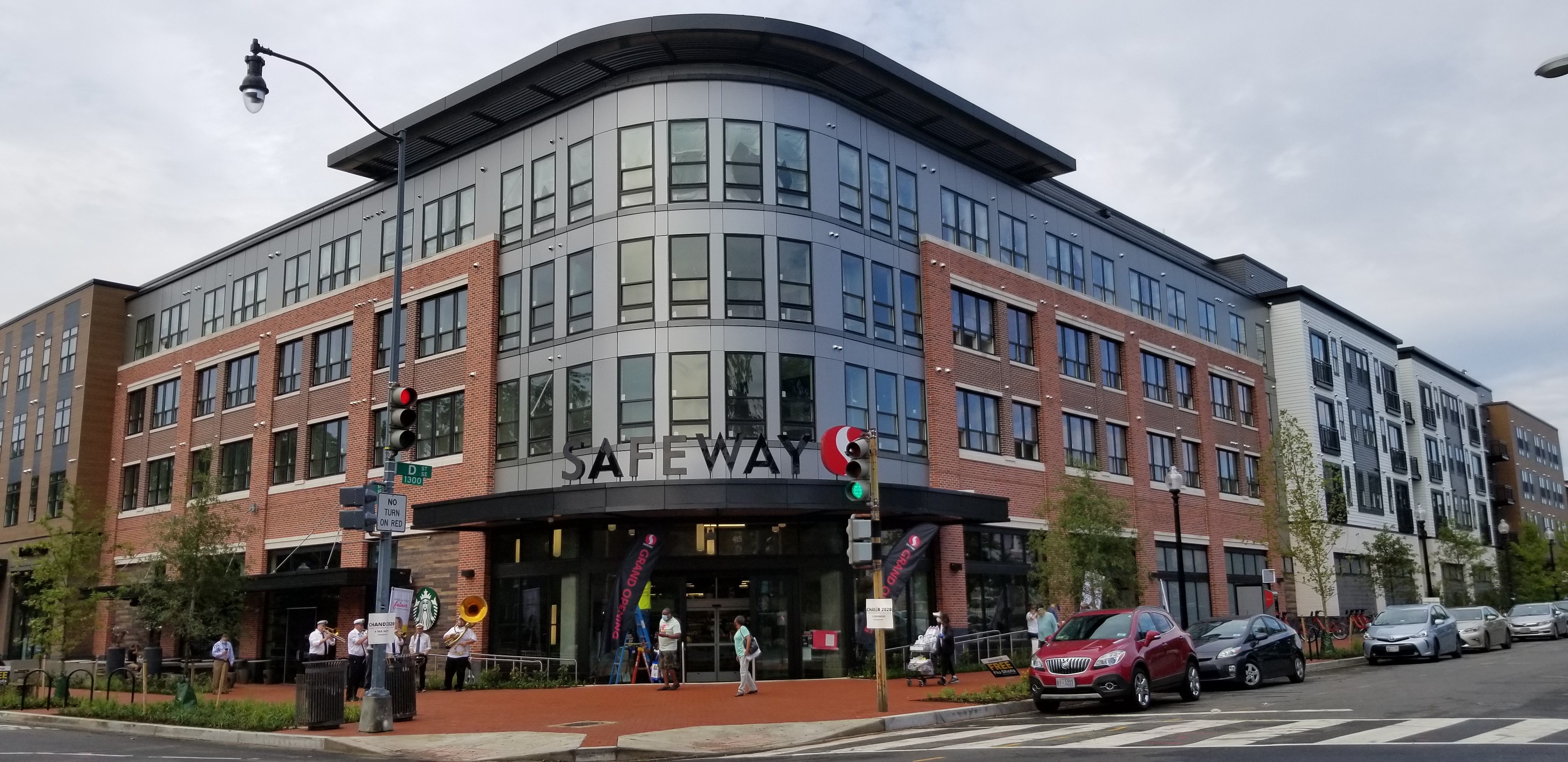
The company continues to marry the cultures of its Albertsons and Safeway stores (which it acquired in 2015) under its “locally great, nationally strong” mantra.
For the 2019 fiscal year ended Feb. 29, Albertsons’ net sales rose 3.2% to $62.46 billion, with identical sales up 2.1% and digital sales surging 39%. The company followed up that growth with first-quarter 2020 gains of 21.4% in net sales, 26.5% in identical sales and 276% in digital sales, largely driven by the pandemic.
In the first quarter, Sankaran reported, Albertsons boosted its market share across its geographic footprint, including in areas where it’s not the market share leader.
“It was a combination of great execution and the portfolio at work — the fresh side, total variety,” he said. “I’m so proud of how quickly the team wrapped up all of our e-commerce capabilities and adjusted and re-engineered things so that we could give our customers omnichannel solutions when they needed it, either pickup or delivery to their homes. A combination of things that we’ve always believed in really came to fruition in a very difficult environment. We were fast, we were nimble. And we didn’t have to just depend on decisions from Boise. Because of our culture, people locally made it happen.”
Running Great Stores
Albertsons opened 14 new stores and remodeled 243 stores in fiscal 2019, and so far this fiscal year the company has upgraded 46 locations.
“We try very hard to touch at least 10% of our store base each year with remodels to keep them current,” said Susan Morris, executive VP and chief operations officer.
“As far as 2020, we’ll still get to remodel at least 10% of our store base and probably open somewhere between 10 and 15 new stores,” she explained. “It’s really important for us to invest in our store base, making it look great for our customers, keeping up with our current offerings — expanding on fresh, which is important to us — and modifying to accommodate our growing e-commerce business.”
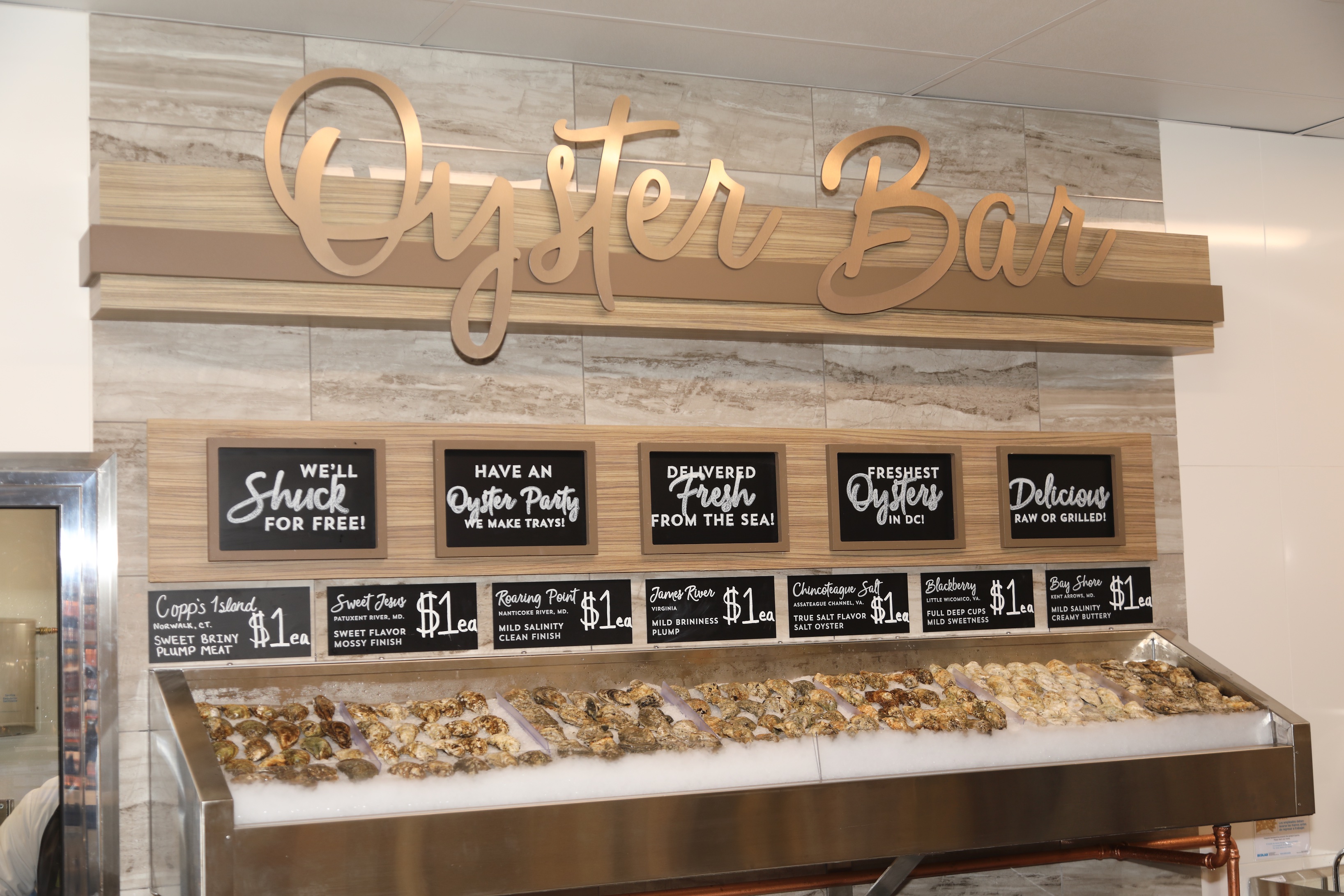
“We have unique offerings,” said chief operations officer Susan Morris. “The sense when you walk in the store is just fantastic. And these are also places where you may want to come in and just linger.”
Morris noted that Albertsons is “very proud” of its fresh business, which represents about 35% of sales, a 300-basis-point advantage to traditional grocers and about 1,100 basis points more than the multi-outlet retail channel (MULO).
“We’ve established some great history there. We pride ourselves on the fact that we still have butchers in our stores which, by the way, has been really helpful during the COVID crisis. When meat was in short supply, we were able to buy larger primals from a restaurant supply company and process them in-store, which was a nice win for our customers and communities.”
Meal solutions are another key focus. “We have a number of different initiatives out there around meals, what we’re calling our ready-to-eat, ready-to-heat and ready-to-cook meal solutions,” Morris said. “There are some days you just want to pop it on the table and be ready to go, and some days you’re willing to take a little bit more prep time. We’re working on destinations within the store to make it really easy for the customer.”
According to chief merchant Geoff White, Albertsons brings to the table an “incredible” fresh-cut produce offering.
“That’s both for fruits and vegetables. We take what I would say is a higher-than-USDA spec on the right items in produce, and we cut them and prepare them. We make it easier for our customers,” White said. “The emergence of high quality and convenience has created this destination for us in-store that has really elevated our fresh departments.”
White also cited Albertsons’ five-star cake decorating program as a big draw. “We train our cake decorators to not only customize cakes, but also to bring seasonality and events to life in this destination behind a glass case that really screams quality,” he explained. The retailer’s floral departments, too, offer a full-service experience. “We have a different offering than most other retailers. We kind of look at our floral department as a florist shop in a grocery retailer,” he said.
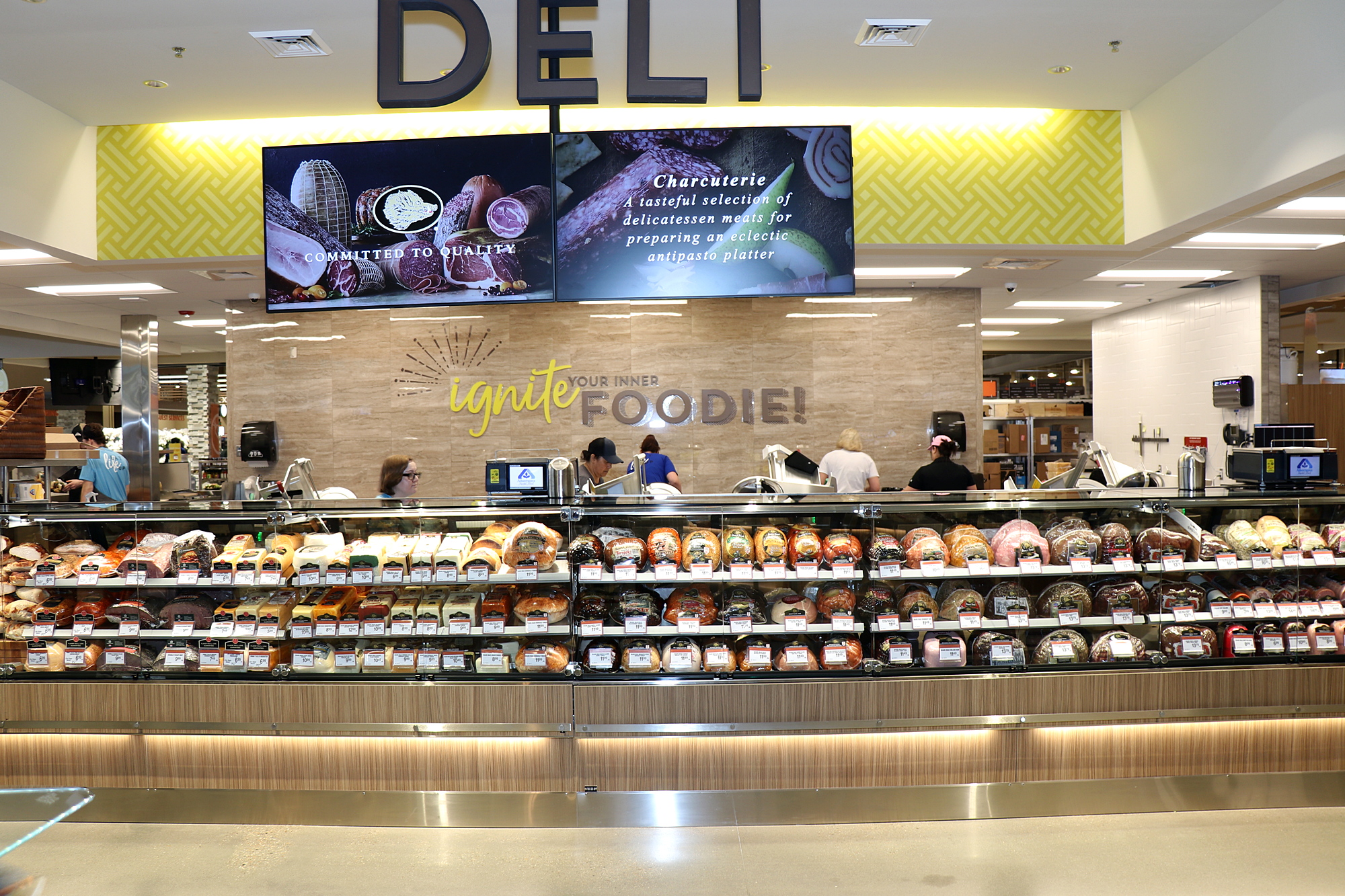
Meal solutions are another key focus at Albertsons, including a number of ready-to-eat, ready-to-heat and ready-to-cook offerings.
In its efforts to be “easy, exciting and friendly,” Albertsons is experimenting with its store formats as well — again, emphasizing fresh.
“There are stores where we highlight fresh in a way bigger than we ever have before,” Morris said. “We have unique offerings. We may have mozzarella that we make in-store, all-from-scratch bakeries, fresh-popped popcorn, dry aged beef. The sense when you walk in the store is just fantastic. And these are also places where you may want to come in and just linger. There’s COVID, so times are different right now. But these are stores where you can get great samples, see products that you may haven’t seen before — not only in fresh, but in center store as well. And, again for safer times, we have wonderful seating areas where we may have live music on the weekend and you can get your favorite alcoholic beverage, or maybe just a nice-size soda.”
White stressed that the fresh side of the business is a critical differentiator for Albertsons. “It has been in our DNA for decades. As others talk about bolstering their fresh and trying to do things differently, it’s what defines us as an organization,” he said. “There are areas in the store where others have walked away from but we’ve embraced.”
Own Brands Expansion
Another area Albertsons has embraced is private label, or its “Own Brands” portfolio. Private-brand expansion and innovation remain pillars of the company’s overall growth strategy. The retailer reported 25.4% private-label penetration for fiscal 2019 and aims to raise that to 30% in the next few years.
Albertsons’ Own Brands roster now includes more than 12,000 items across nine primary brands, with four — Lucerne, O Organics, Signature and Signature Café — topping $1 billion in annual sales. In fiscal 2019, more than 900 new Own Brands products were added. During the 2020 first quarter, 400 new private-brand items were introduced, and 800 additions are planned for the full year.
“As customers get used to our brands and trust our brands, you can drive innovation within current categories and get into new categories,” White said. “We remodeled the entire portfolio from a packaging perspective. That elevated the perception of the brands and the quality of the brands.”
Sankaran said Own Brands grew to a $13 billion business in 2019 — faster than Albertsons’ national-brand sales — and the portfolio, on average, brings a 1,000-basis-point edge in gross margin versus national brands. Amid the pandemic, he noted, private label proved to be a growth driver, with sales of the O Organics organic product line and Open Nature free-from line climbing faster than the overall business, up 31% and 28%, respectively.
“We’ve got an incredibly strong team that is built around innovation, category management and product quality,” said White, who previously served as president of Own Brands. “I kind of consider them this little CPG [company] inside of our business — even though they’re a big CPG, because they’re over 25% of our business,” White said. “We continue to see lots of growth there.”
Being Technology-Driven
A linchpin of Albertsons’ growth push has been its renewed embrace of technology — perhaps best epitomized by its addition of former Microsoft and Amazon executive Chris Rupp as chief customer and digital officer, a newly created position, in December.
“One of the things I enjoy most about Albertsons is that it’s taking a customer-first approach to digital transformation. We’re focusing on providing a convenient shopping experience for all of the great, fresh and packaged foods that customers have been buying from us for decades,” Rupp said. “We’re expanding our e-commerce capabilities so that we can reach more customers. We are speeding up our operations so we can deliver faster to customers. We are launching Drive Up & Go service at 800 of our more than 2,200 stores. This year, we also are investing in fulfillment technologies to ensure we can deliver fast and complete and have great substitutions for customers. Finally, we’ve added new customer-service technology, with chatbots that will help us ensure we can answer every customer’s question as quickly as possible.”
To support e-commerce growth, Albertsons is building on its partnership with Takeoff Technologies to deploy automated micro-fulfillment centers (MFCs) to fill online grocery orders. The grocer now has two Takeoff-powered MFCs at Safeway supermarkets in South San Francisco and San Jose, Calif., which went into operation in late 2019.
“We have been working with Takeoff on a series of pilots in our network, and we plan to expand beyond the two that we already have launched,” Rupp said. “We have a series of new locations we’ll launch over 2020 and 2021 that will help us deliver more groceries, faster, to customers in some of our highly concentrated areas of business.”
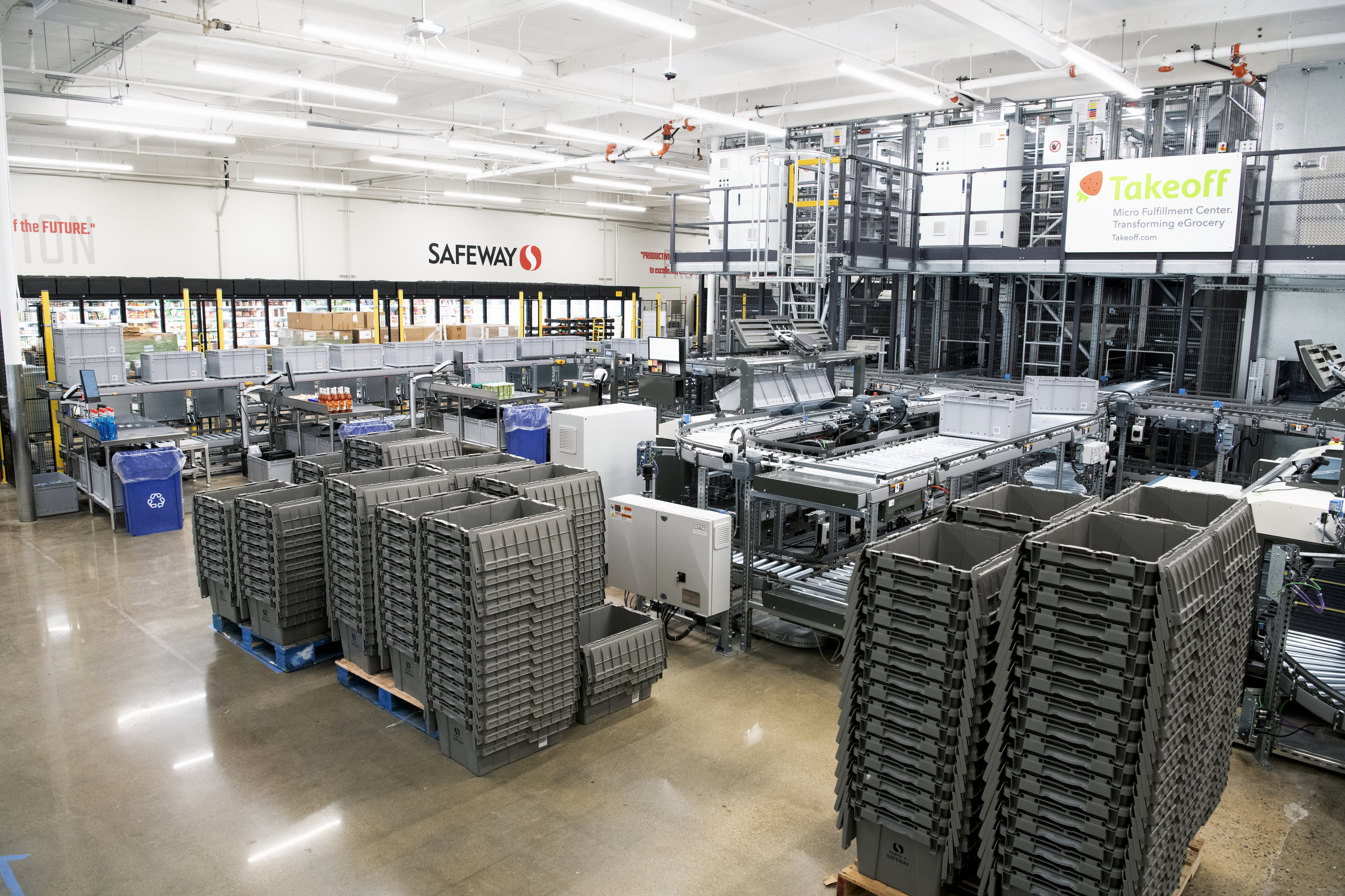
Albertsons now has two Takeoff-powered micro-fulfillment at Safeway supermarkets in South San Francisco and San Jose, Calif., which went into operation in late 2019.
New MFCs could include stand-alone facilities. “Our intent is to have a freestanding facility in this bunch,” according to Rupp. “I’m considering this entire group of facilities to be a series of pilots where we try different approaches to fulfillment to find out which is the best at providing the most efficient service for customers. For example, you can set up a MFC where it’s primarily customers in the local trade area of one store, or you can also set up a hub-and-spoke model where one MFC is serving many different stores. Another approach would be to set up a dark store as a MFC.”
A landmark technology decision came early last year, when Albertsons adopted Microsoft Azure as its preferred cloud platform to “digitally transform” customer interactions, hone operations, and deliver better products and services. Benefits include making it easier for customers to find the products, reducing wait times at service counters and checkout, and helping store personnel anticipate out-of-stocks. Albertsons, too, is building its data and analytics platform on Azure to gain more insight to act on revenue-driving opportunities and make promotions more relevant.
“At the same time that we have been working with Microsoft to move our data estate to Azure, we also have hired a team of data scientists to more deeply analyze customer behavior and trends,” Rupp said. “So now we’re beginning to learn a lot more about our customers, and our intention is to use this information to create an overall better shopping experience.”
Albertsons also has capitalized on learnings from its just for U loyalty program. In the 2020 first quarter, the number of members redeeming digital deals and coupons rose 32%, with the average weekly spend twice that of customers not redeeming that savings. Likewise, sales from households redeeming digital deals, coupons and awards through just for U were up 28% versus their spend a year ago.
“Our occasional customers have changed their behavior most dramatically over the past few months,” Rupp said. “Those customers are now choosing Albertsons much more often as they have consolidated their shopping trips. This is an example where an occasional customer — not one who we would know very well — is starting to shop with us more often. So we can create better personalized experiences for those customers as well.”

